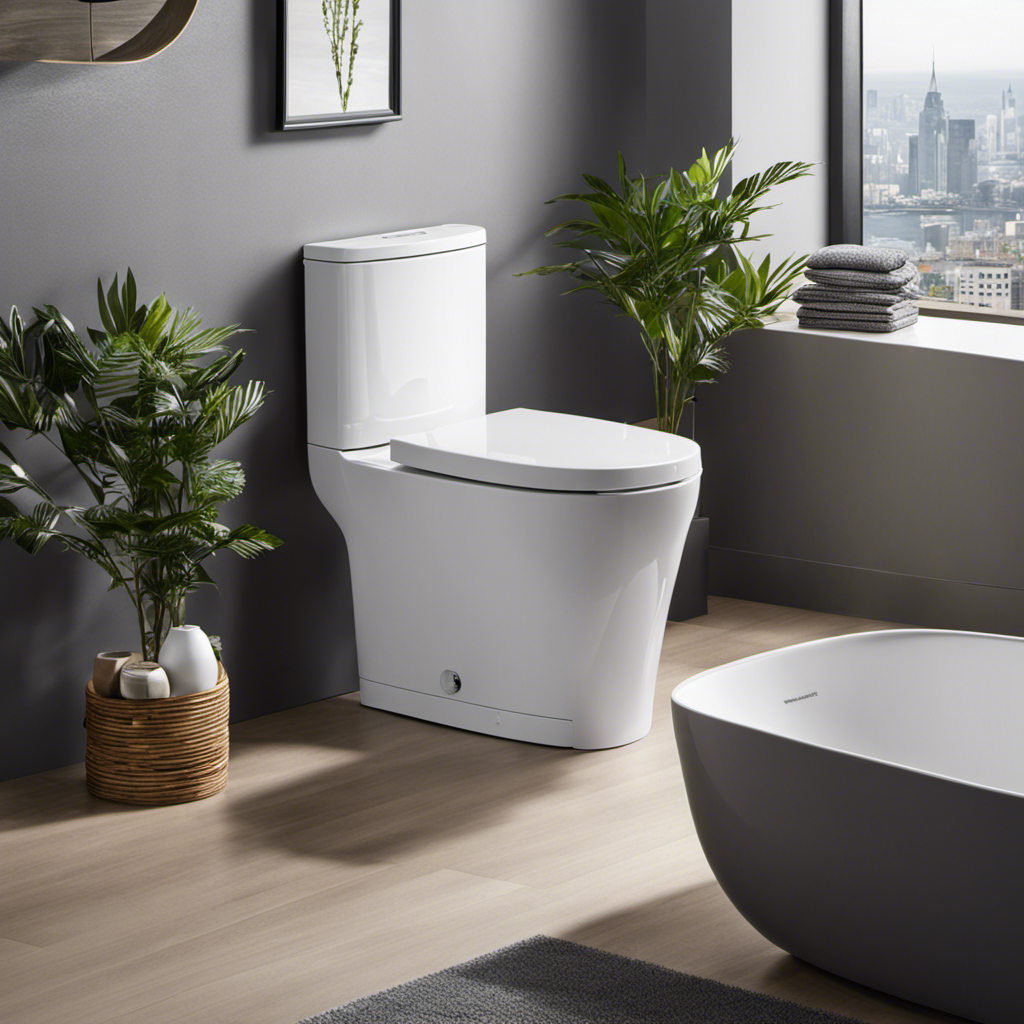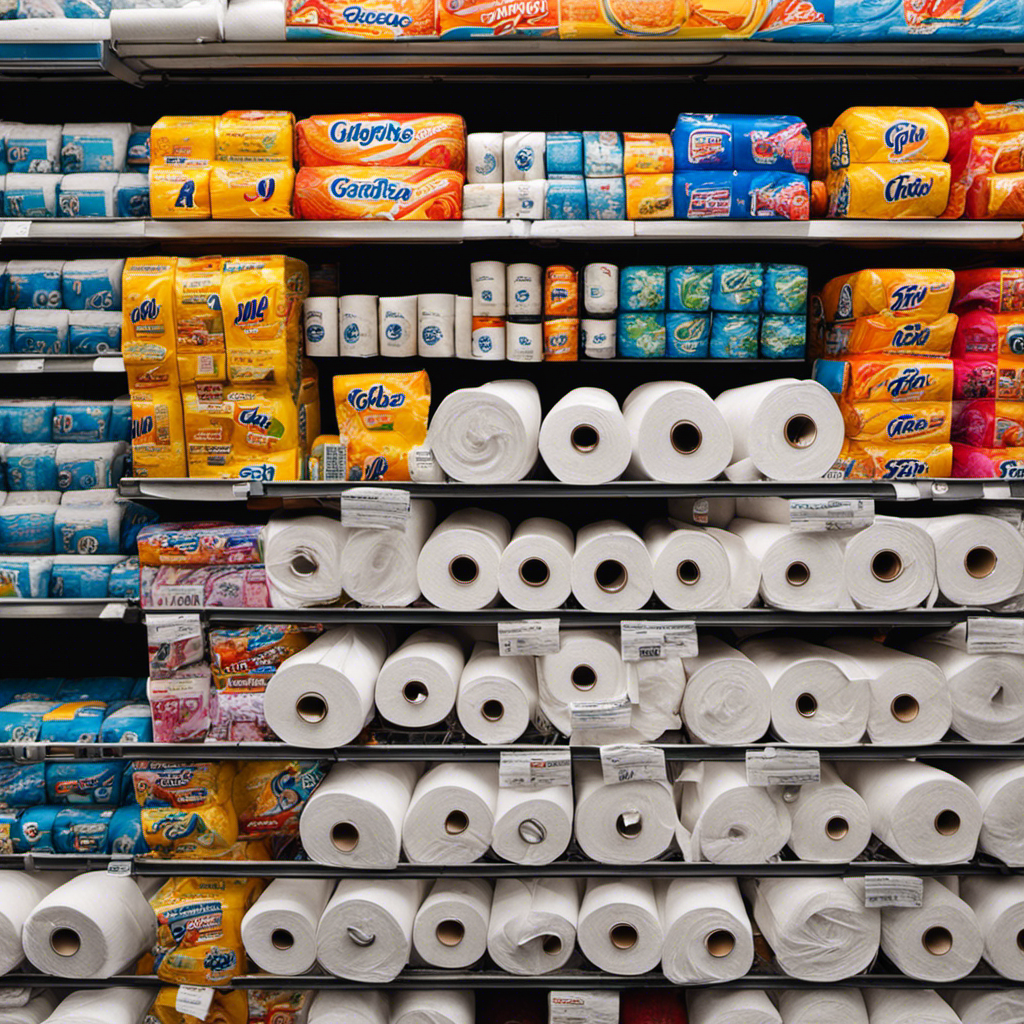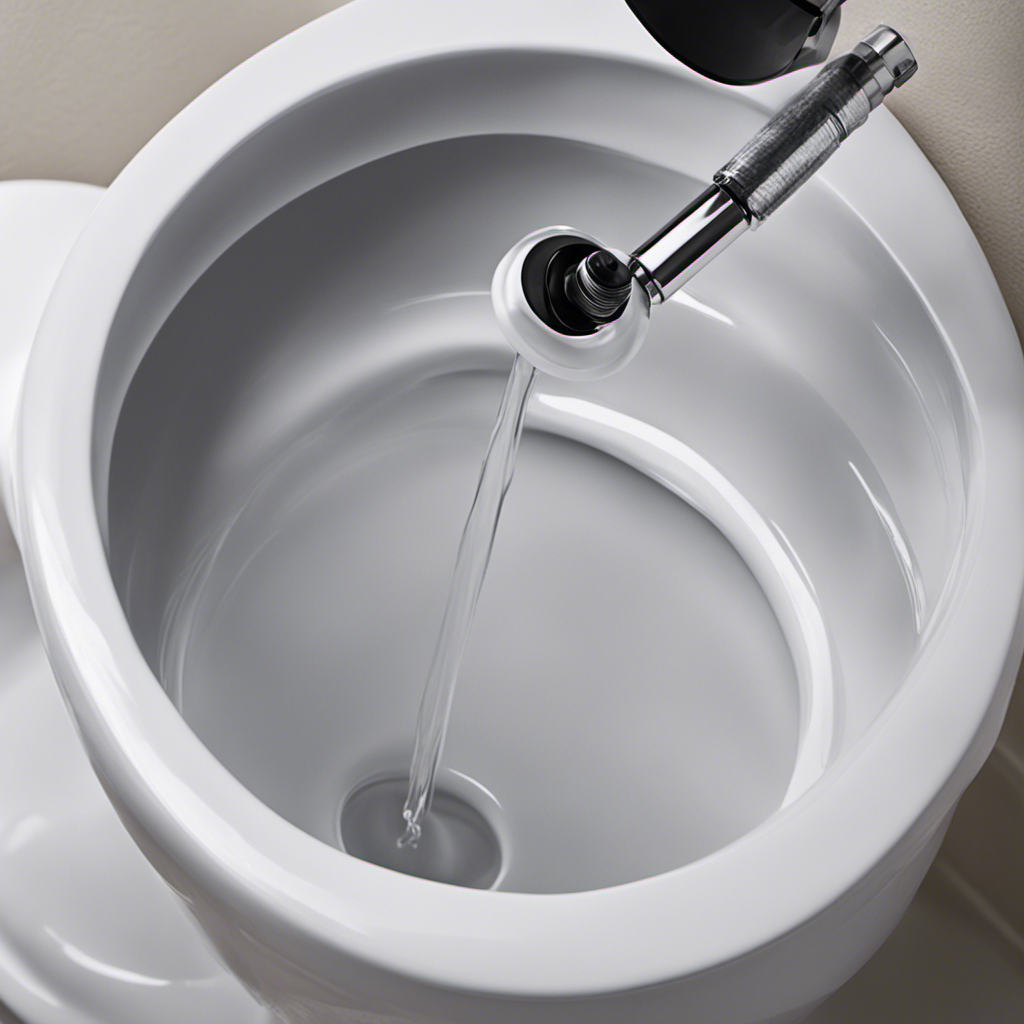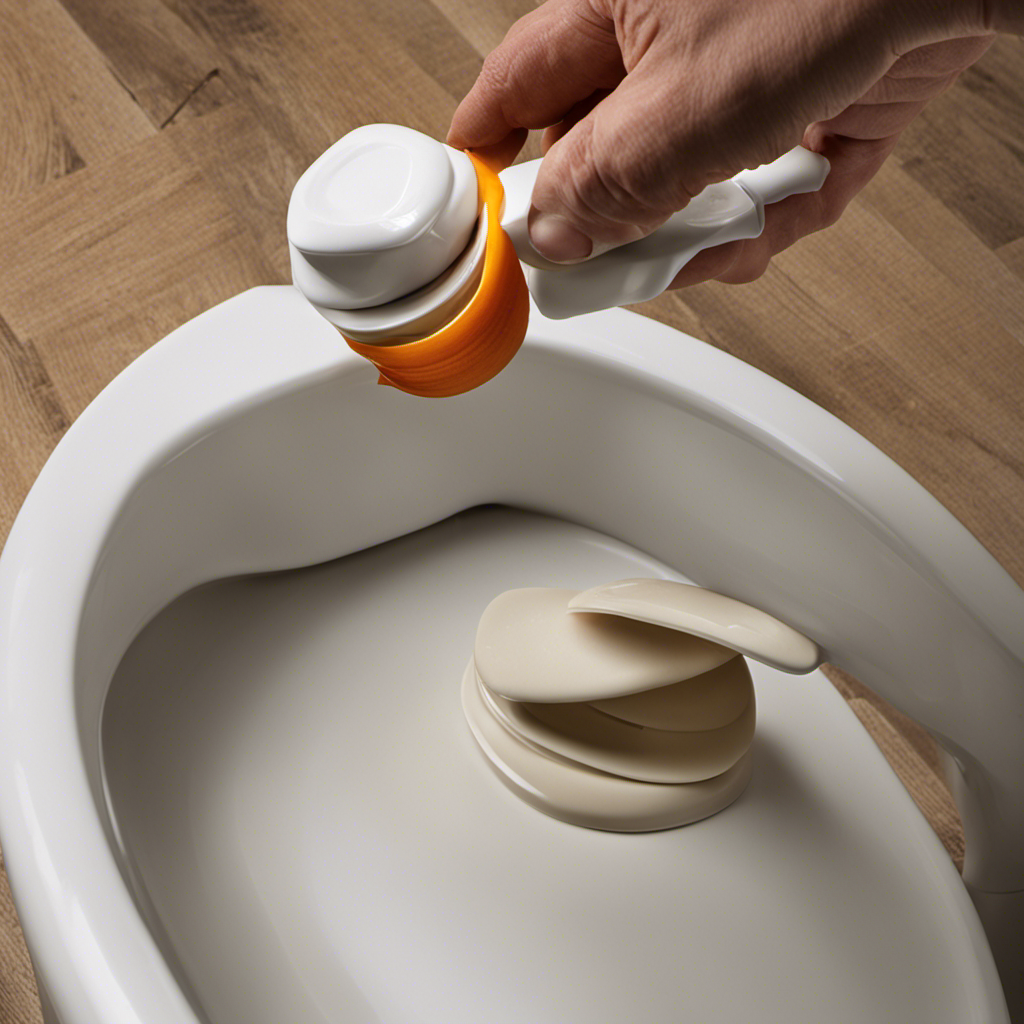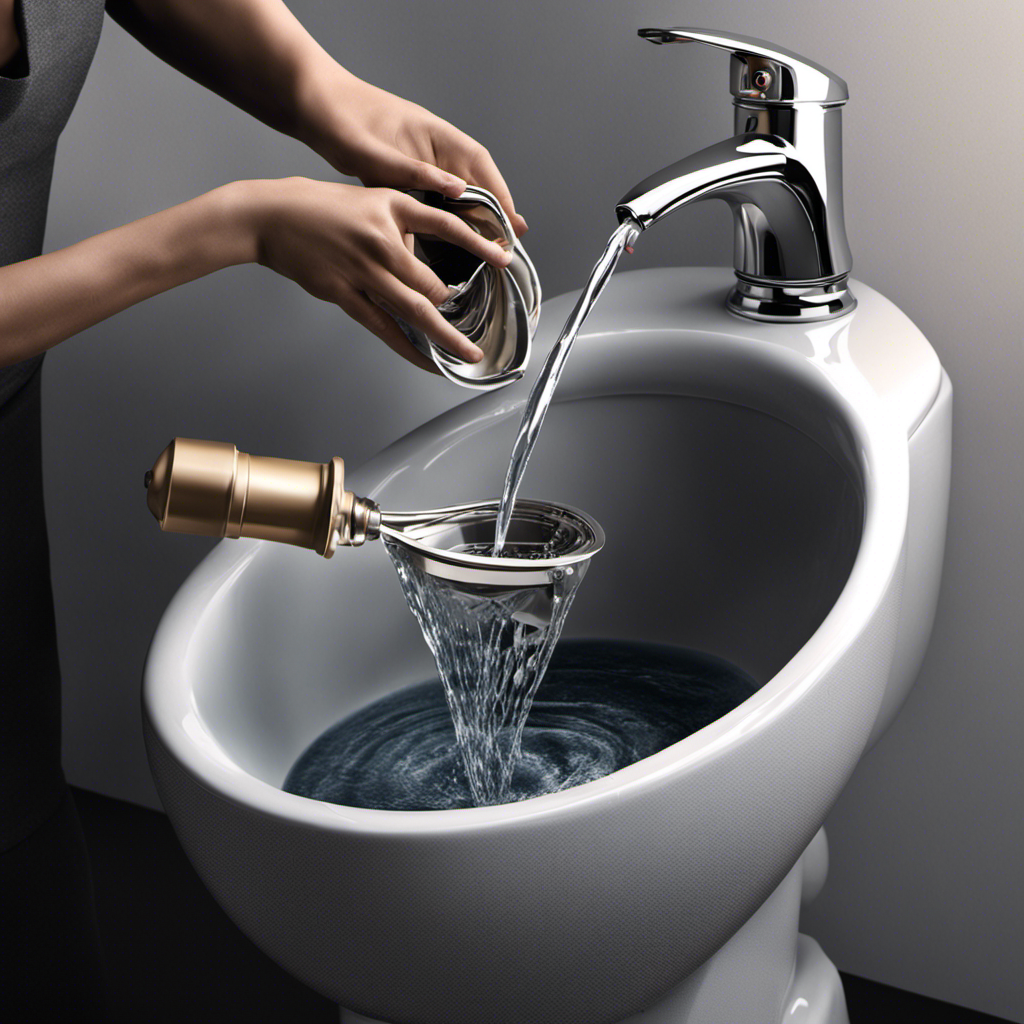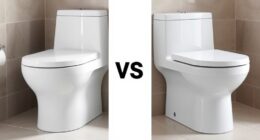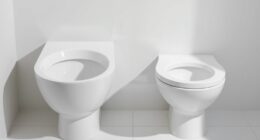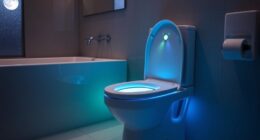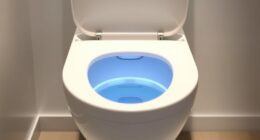As a homeowner, I strive to find efficient and eco-friendly solutions for my everyday needs. That’s why I’m fascinated by the inner workings of tankless toilets.
These innovative alternatives to standard flushing toilets are like a breath of fresh air in the world of water conservation. By eliminating the need for a tank and relying on a direct water supply, tankless toilets reduce excess consumption and waste.
In this article, we’ll explore the advantages of tankless toilets, the role of flushometers in their efficiency, and much more.
Key Takeaways
- Tankless toilets provide an alternative to standard flushing toilets by not storing water in a tank and instead using water directly from the public water supply line.
- Flushometers control the flow of water in tankless toilets and can be activated by various methods such as buttons, motion sensors, levers, or dual flush.
- Tankless toilets are more water-efficient compared to tank toilets, using only up to 1.6 gallons per flush, while older tank toilets can use up to six gallons per flush.
- Tankless toilets offer additional features such as air purification filters, motion detectors, self-cleaning functions, and remote control operation, but require professional installation and maintenance, and may produce more noise when flushing.
The Advantages of Tankless Toilets
I really appreciate the advantages of tankless toilets, such as their water efficiency and eco-friendly design.
Tankless toilets are a sustainable choice that offers significant benefits. Firstly, their water efficiency is unparalleled. These toilets only use up to 1.6 gallons per flush, which is significantly lower than the older tank toilets that consume up to six gallons. This water conservation is crucial in addressing the global issue of water scarcity.
Secondly, tankless toilets contribute to the overall sustainability of a building. By eliminating the need for a water-filled tank, they save space and reduce the environmental impact. Additionally, tankless toilets often come with features like air purification filters and motion detectors, further enhancing their eco-friendly design.
Overall, the advantages of tankless toilets align with the sustainability benefits of water conservation and reduced environmental impact.
How Flushometers Contribute to Efficiency
Flushometers play a crucial role in the efficiency of water flow and quantity during the flushing process. Different types of flushometers are used to optimize water pressure and ensure efficient flushing.
Here are four key points about flushometer types and water pressure optimization:
-
Piston Valve Flushometers: These flushometers use a piston mechanism to regulate water flow. They are known for their durability and reliability, making them suitable for high-traffic areas.
-
Diaphragm Valve Flushometers: These flushometers utilize a diaphragm to control water flow. They offer superior water pressure optimization and are commonly used in commercial buildings.
-
Water Pressure Adjustment: Flushometers allow for water pressure adjustment, ensuring the right amount of water is used for each flush. This feature helps conserve water and minimize waste.
-
High Water Pressure Compatibility: Flushometers are designed to handle high water pressure, making them ideal for tankless toilets. Their ability to handle high water pressure ensures efficient flushing and eliminates the need for multiple flushes.
Comparing Tankless Toilets to Tank Toilets
Tank toilets rely on a stored water supply in the tank, while tankless toilets receive water directly from the public water supply line.
When comparing tankless toilets to tank toilets, there are several pros and cons to consider.
One of the main advantages of tankless toilets is their water efficiency. They only use water when necessary, reducing excess consumption and waste. This can lead to significant water savings over time.
Additionally, tankless toilets take up less space compared to tank toilets, making them ideal for smaller bathrooms or spaces.
However, there are some drawbacks to tankless toilets. They have a higher installation cost and require professional installation and maintenance. They may also produce more noise when flushing due to the electric pump.
Overall, the cost effectiveness of tankless toilets depends on factors such as water consumption, installation costs, and maintenance requirements.
Water Consumption and Conservation Benefits
Water consumption is a critical issue, and tank toilets use more water compared to tankless toilets. This is where water-saving technologies come into play. Tankless toilets offer significant benefits when it comes to water conservation.
Here are four reasons why tankless toilets are better for water consumption and are aligned with global water conservation efforts:
-
Efficient Design: Tankless toilets do not store water in a tank, eliminating the need for excess consumption and waste. They only use water when necessary, reducing water usage significantly.
-
Low Flush Volume: Tankless toilets typically use only 1.6 gallons per flush, compared to older tank toilets that can use up to six gallons per flush. This reduced volume contributes to water conservation efforts.
-
Compliance with Regulations: Many countries, including the US, have set clear water conservation rules. Tankless toilets meet these regulations by limiting the amount of water used per flush, ensuring responsible water usage.
-
Global Efforts: Water conservation is a global concern, and tankless toilets play a vital role in these efforts. By implementing water-saving technologies like tankless toilets, we can contribute to the worldwide conservation of this precious resource.
Additional Features for Convenience
I was pleasantly surprised to discover that modern tankless toilets come with features like air purification filters and motion detectors for added convenience. These additional features enhance the functionality of tankless toilets and make them even more user-friendly.
The self-cleaning technology ensures that the toilet bowl remains clean and hygienic at all times, reducing the need for manual cleaning. With remote control operation, users can easily control various functions of the toilet, such as flushing, bidet sprays, and even adjusting the seat temperature. This allows for a more personalized and comfortable experience.
Tankless toilets have truly evolved to meet the needs of modern users, providing not only water efficiency but also convenience and comfort.
Installation and Maintenance Considerations
One important consideration when installing and maintaining these innovative bathroom fixtures is the need for professional assistance. Tankless toilets require specialized knowledge and expertise to ensure proper installation and optimal performance.
Here are some key factors to consider when it comes to installation and maintenance:
-
Installation Cost: The installation of tankless toilets can be more expensive compared to traditional toilets due to the additional requirements such as water filters and electric pumps. Professional assistance is necessary to ensure proper installation and avoid any potential damage to the plumbing system.
-
Maintenance Requirements: Tankless toilets require regular maintenance to keep them functioning efficiently. This includes cleaning the filters, checking the water pressure, and inspecting the electric pump. Professional plumbers can provide the necessary maintenance services to extend the lifespan of the toilet and prevent any potential issues.
-
Expertise and Knowledge: Professional plumbers have the necessary expertise and knowledge to handle the complexities of tankless toilets. They can ensure that the toilet is installed correctly, the water pressure is regulated, and any potential issues are addressed promptly.
-
Warranty and Support: By seeking professional assistance, you can ensure that the installation and maintenance of your tankless toilet are covered by warranty. This provides you with peace of mind knowing that any potential issues will be taken care of by the manufacturer or the professional plumber.
Noise and Water Pressure Concerns
The noise level and water pressure should be carefully considered when installing a tankless toilet. Tankless toilets often rely on electric pumps to provide the necessary water pressure for efficient flushing. However, this can result in increased noise during operation. To address this concern, manufacturers have developed noise reduction technologies such as insulated tanks and sound-dampening materials. These features help minimize the noise produced by the electric pump, ensuring a quieter bathroom experience. Additionally, water pressure regulation is crucial for the proper functioning of a tankless toilet. High water pressure can cause damage to the toilet’s pipes and fittings. To prevent this, pressure regulators can be installed to maintain a stable and safe water pressure level. Taking these factors into consideration during the installation process will contribute to the optimal performance and longevity of your tankless toilet.
| Noise Reduction | Water Pressure Regulation |
|---|---|
| Insulated tanks | Pressure regulators |
| Sound-dampening materials | Stable water pressure |
| Prevents pipe damage |
The Role of Water Filters in Performance
Installing water filters in a tankless toilet enhances its performance and ensures cleaner water for flushing. The water filters play a crucial role in maintaining the efficiency and cleanliness of the toilet system. Regular maintenance of these filters is essential to ensure optimal functioning.
There are different types of water filters used in tankless toilets, each with its own unique features and benefits. These include:
-
Sediment filters: These filters remove particles and debris from the water supply, preventing clogs and blockages in the toilet system.
-
Carbon filters: Carbon filters eliminate chlorine, odors, and other impurities, providing cleaner and fresher water for flushing.
-
Reverse osmosis filters: These filters use a semi-permeable membrane to remove contaminants, ensuring the highest level of water purity.
-
UV filters: UV filters use ultraviolet light to disinfect and kill bacteria and viruses, maintaining a hygienic environment in the toilet.
Regular maintenance of water filters is crucial to prevent clogging, ensure optimal performance, and maintain the quality of the water used for flushing.
Ensuring a Stable Power Supply
When it comes to ensuring the efficient operation of tankless toilets, one crucial aspect to consider is power supply stability. As these toilets rely on electricity to power their pumps and sensors, any fluctuations or interruptions in the power can affect their functionality.
To maintain a stable power supply, it is essential to have a dedicated electrical circuit for the tankless toilet. This circuit should be properly grounded and protected by a circuit breaker or fuse.
Regular maintenance checks should also be conducted to identify any issues with the power supply and address them promptly. Additionally, it is advisable to keep the toilet’s power cord and connections clean and free from dust or debris, as this can improve the overall performance and longevity of the toilet.
The Future of Tankless Toilets and Sustainability
I believe that the future of water-saving toilets lies in the widespread adoption of tankless technology. Tankless toilets have a significant impact on water usage and conservation, thanks to their efficient design and high water pressure.
The role of government regulations in promoting the adoption of tankless toilets cannot be overlooked. Here’s how tankless toilets contribute to water conservation and sustainability:
-
Reduced water consumption: Tankless toilets use only 1.6 gallons of water per flush, compared to older tank toilets that can consume up to six gallons. This drastic reduction in water usage helps conserve this precious resource.
-
Compliance with regulations: Government regulations in countries like the US limit the water consumption of toilets to 1.6 gallons per flush. Tankless toilets meet these standards and ensure that water is used responsibly.
-
Global water conservation efforts: Implementing water conservation rules across the globe is crucial. Tankless toilets can play a significant role in these efforts by minimizing water consumption and promoting sustainable practices.
-
Long-term environmental impact: By adopting tankless toilets, we can help reduce the strain on water resources, lower water bills, and minimize the environmental impact of excessive water usage.
Overall, the future of water-saving toilets lies in embracing tankless technology and the government’s continued support in promoting their adoption.
Frequently Asked Questions
Are Tankless Toilets More Expensive Than Traditional Tank Toilets?
Yes, tankless toilets are generally more expensive than traditional tank toilets due to their advanced technology and additional features. However, they offer long-term cost savings through water efficiency and have a reduced environmental impact.
Can Tankless Toilets Be Installed in Residential Homes?
Yes, tankless toilets can be installed in residential homes. The installation process involves professional assistance. They offer benefits for the environment by conserving water and reducing water consumption compared to traditional tank toilets.
Do Tankless Toilets Require a Specific Type of Water Pressure to Function Properly?
Tankless toilets require specific water pressure for proper functioning. The installation process is crucial to ensure the right water flow. If the water pressure is too low, the toilet may not flush efficiently, while high water pressure can damage the pipes.
How Often Do Tankless Toilets Need to Be Maintained or Serviced?
Tankless toilets typically require maintenance or servicing every 1-2 years. Costs for maintenance are comparable to traditional toilets. Residential installation is possible, but compatibility with water pressure should be considered. Drawbacks include higher installation costs and potential pipe damage if not properly installed.
Are There Any Potential Drawbacks or Limitations to Using a Tankless Toilet?
Potential issues and maintenance requirements of tankless toilets include higher installation costs, noise during flushing, potential pipe damage, and the need for water filters and a stable power supply.
Conclusion
In conclusion, tankless toilets offer a practical and eco-friendly solution to our water consumption needs. With their efficient design and advanced flushometers, these toilets ensure minimal water usage while still providing effective flushing power.
Compared to traditional tank toilets, tankless toilets save space and offer additional features for convenience. While installation and maintenance may require professional assistance, the long-term benefits of reduced water consumption and improved sustainability make it a worthwhile investment.
As we look towards the future, tankless toilets have the potential to play a significant role in water conservation efforts, contributing to a more environmentally conscious world.
